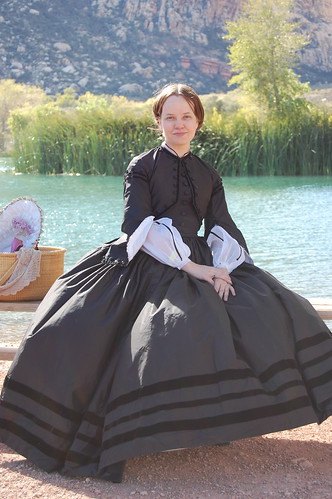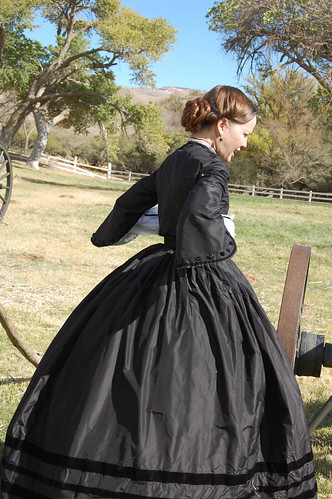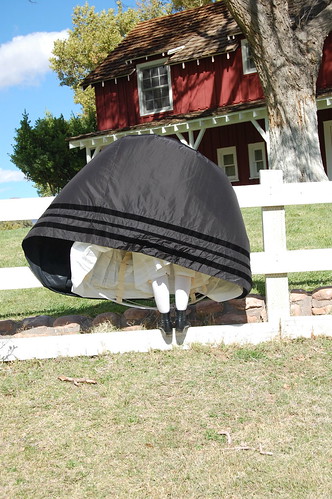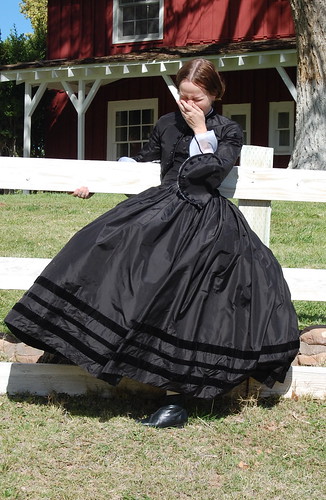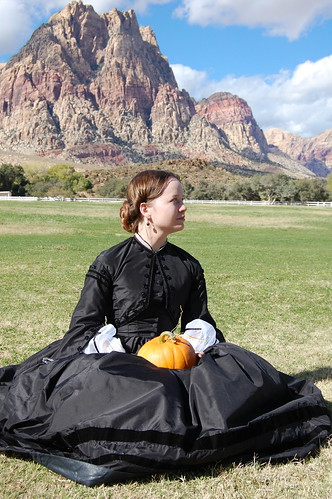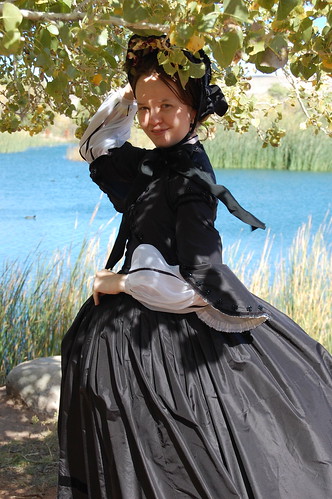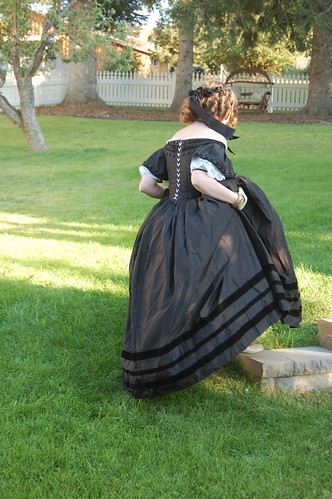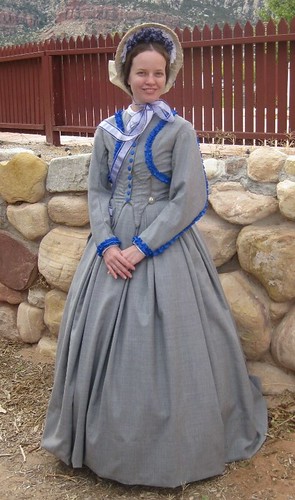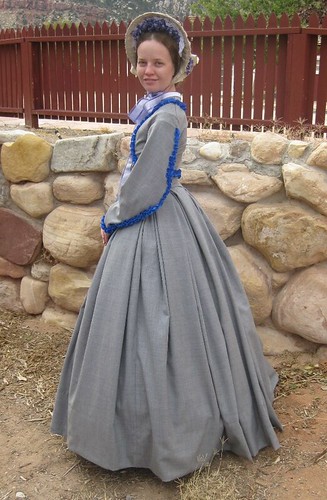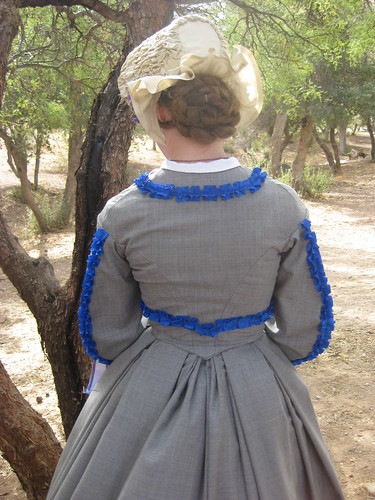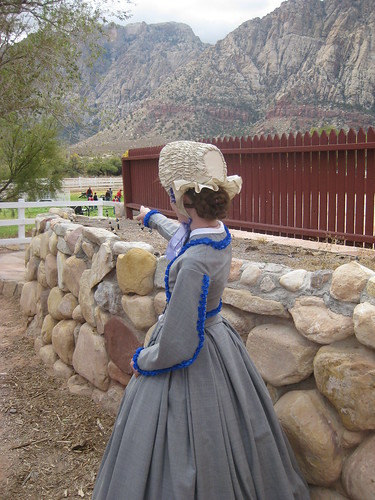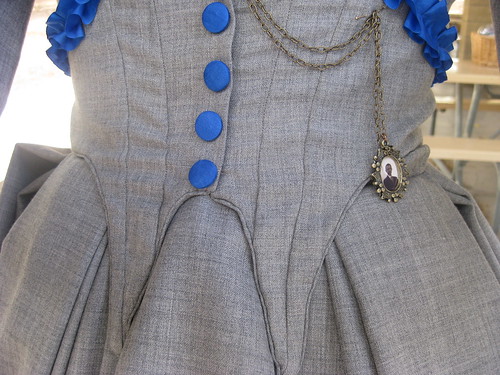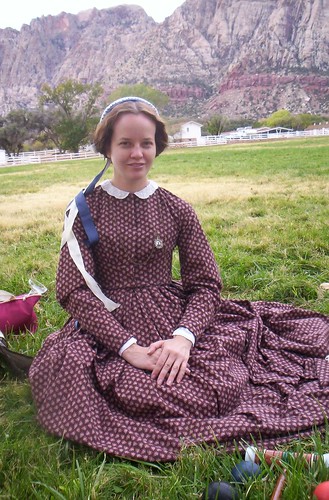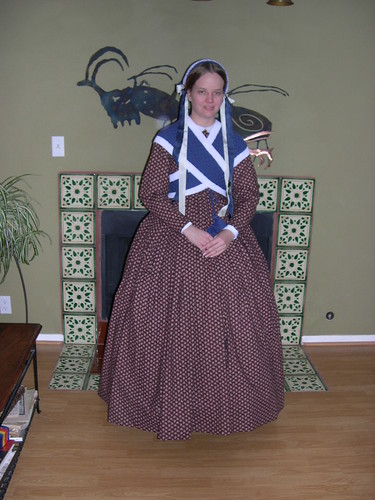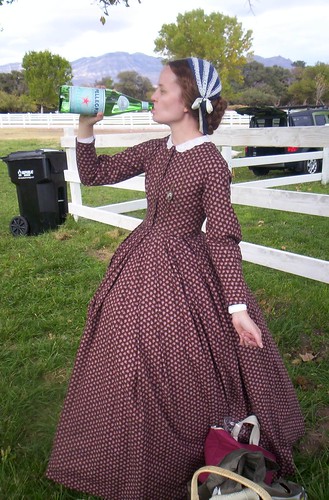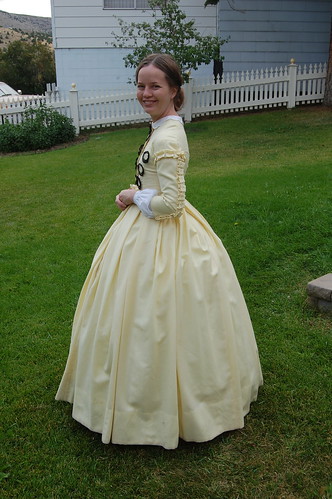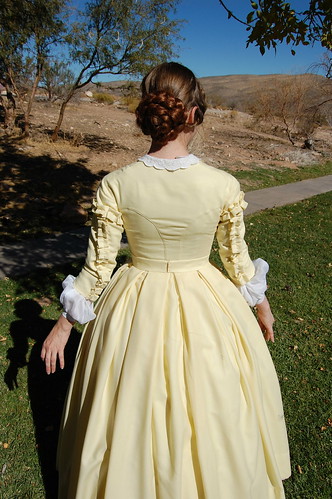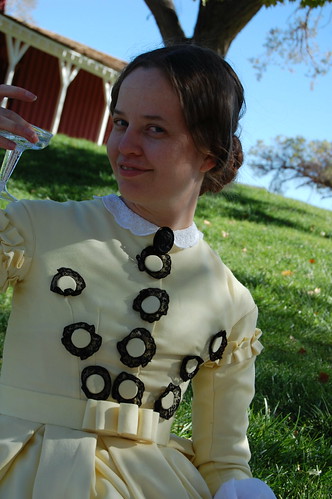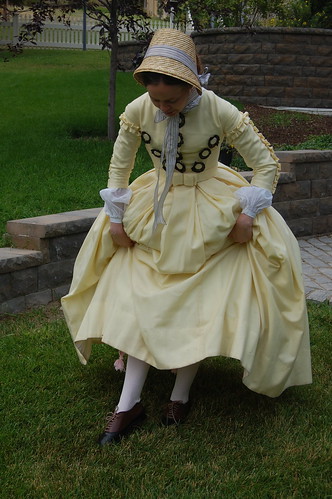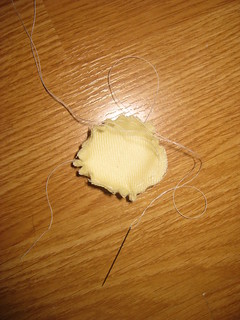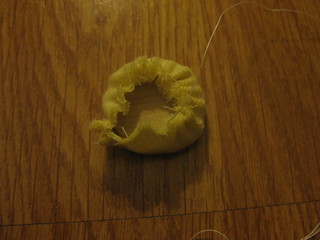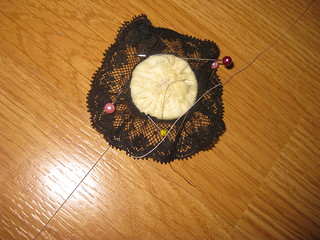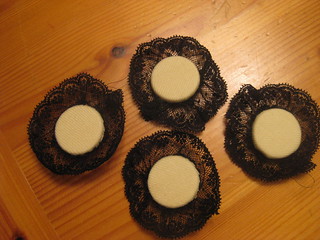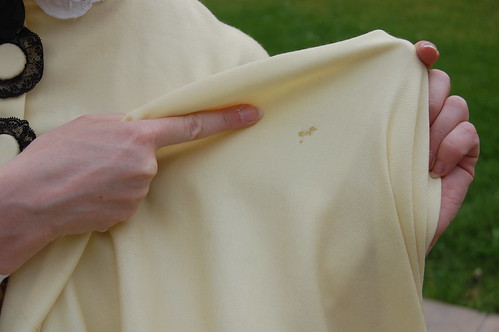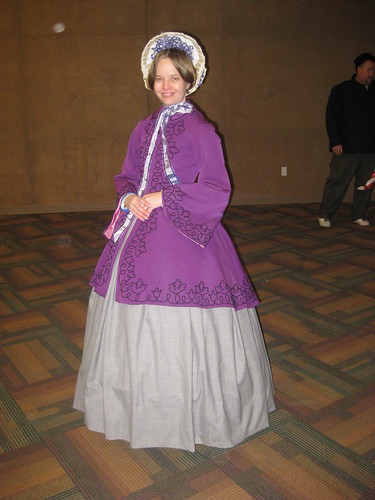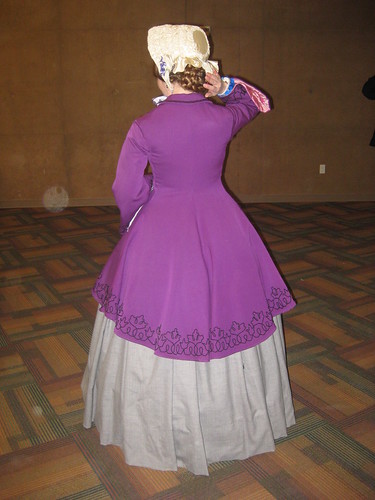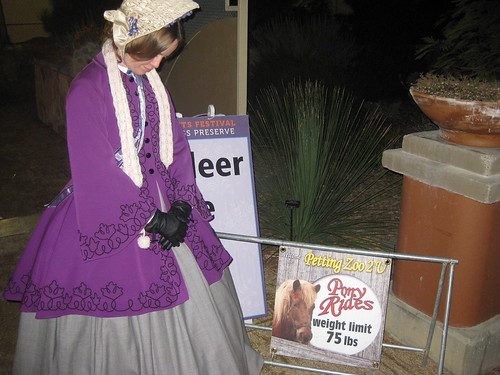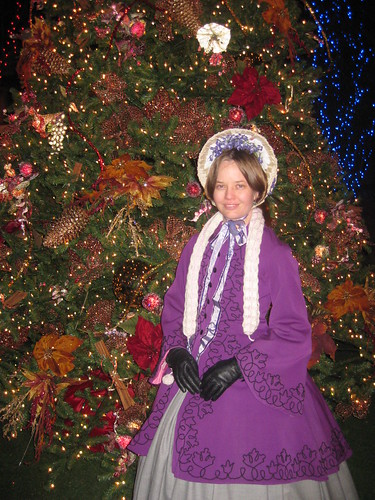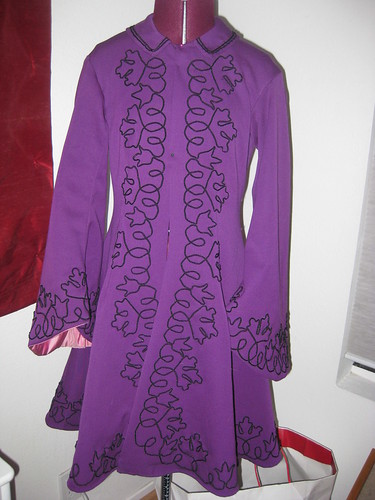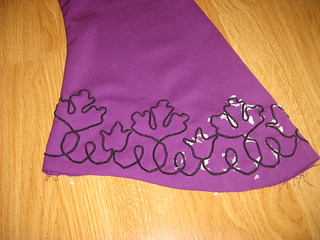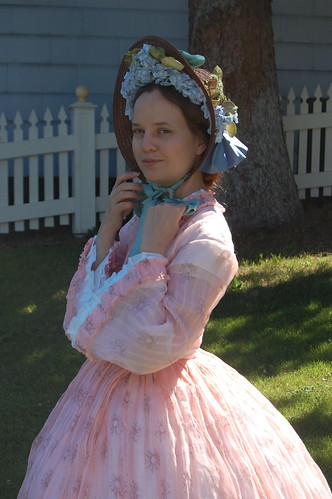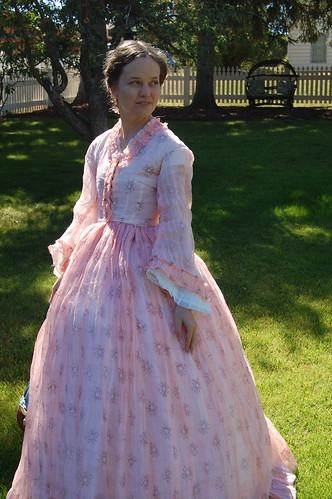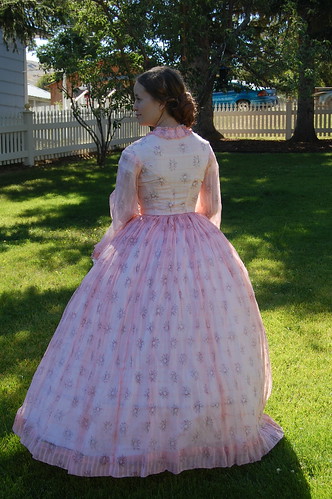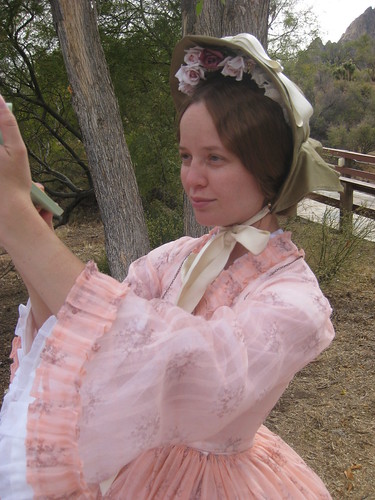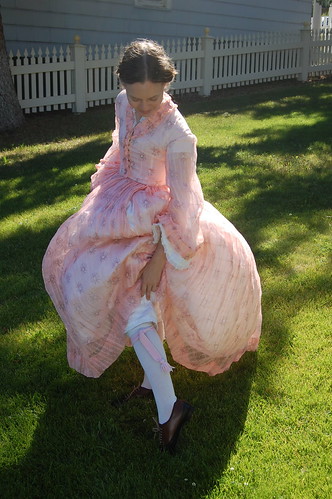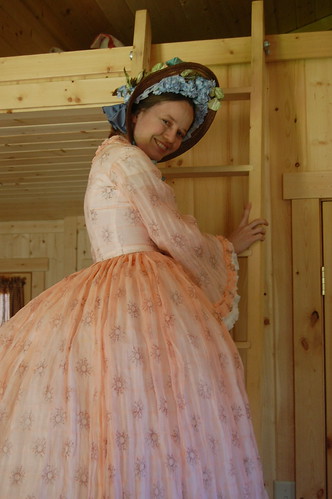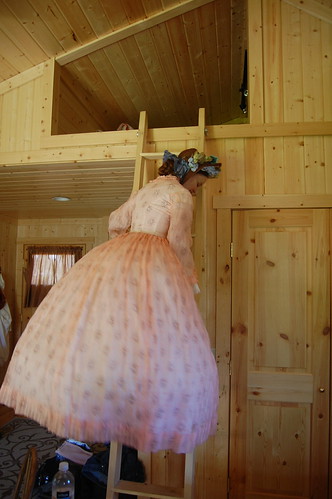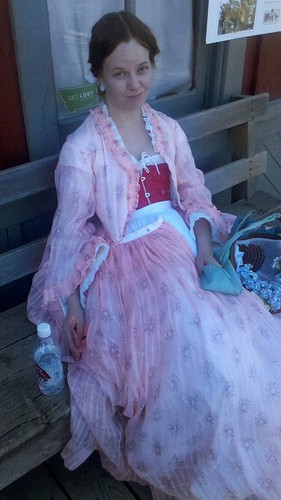
I'm going through a little bit of a knitting phase right now (active projects--an 1857 Princess Royal's Scarf, a cobweb weight nubia (giant scarf thing) on size three needles, an 1860s Mariposa Hood), and as I often do while in knitting phases, I read period knitting patterns. How Dumbledore of me. Anyway, I came across The Child's Muff of Two Colors in The lady's assistant, for executing useful and fancy designs in knitting, netting, and crochet work. by Jane Gaugain and was intrigued. The pattern was interesting--the look of netting over a ground, the technique was interesting--knitting two colors after another instead of back and forth, and just why is it a child's muff? It's the same size as the muff in imitation of black Siberian lamb's-skin on the page before. That one is just ribbed and we all know ribbing looks just like lamb's skin, right?
The pattern is surprisingly simple. It's a four row repeat. I've included a picture of the pattern at the bottom of the post, but I rewrote it so it was a little easier to follow. I used Cascade Aran weight yarn for the 9 ply fleecy in the pattern, and size 8 needles. The pattern calls for a modern size 7, but I have a 6 and an 8. Size 6 was too small, but the size 8 worked nicely. I also increased the number of stitches cast on from 35 to 47. It needs a repeat of three plus two for the selvages. This PDF--Everyone His Own Knitting Needles by Colleen Formby--at raggedsoldier.com is a great source for figuring out period to modern equivalents.
A link to my Ravelry page for the muff, though this post is more detailed.
Instructions below the cut! I've included a very detailed and a straightforward version.

